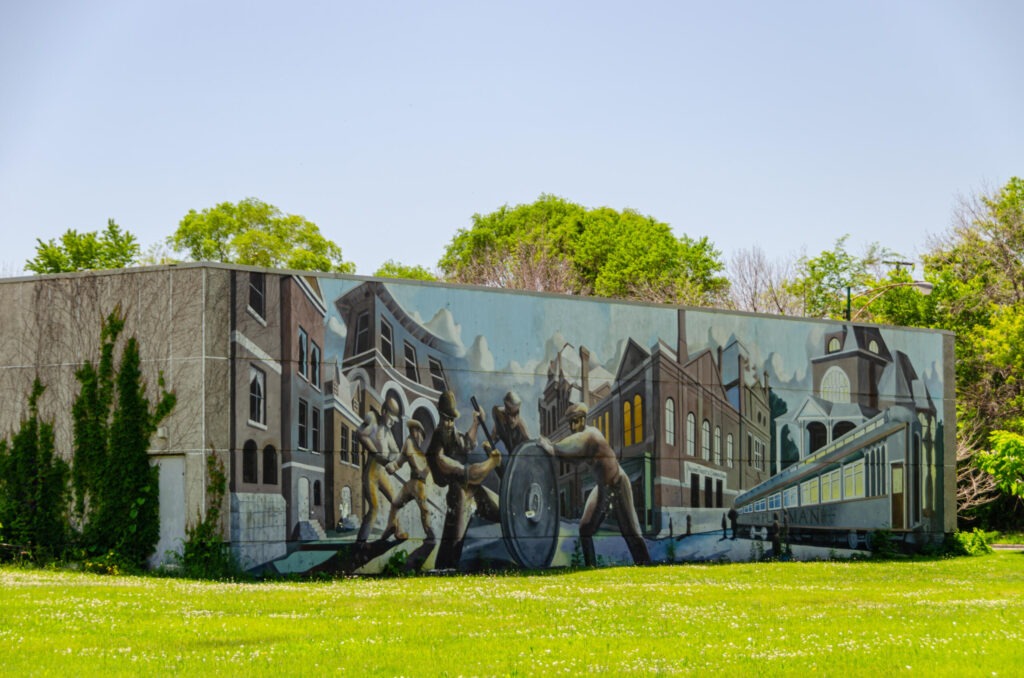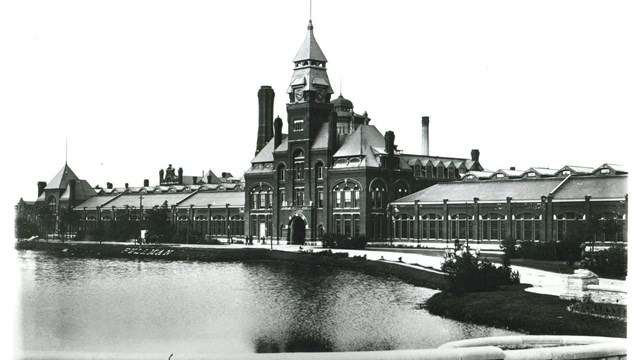Pullman is Founded
The foundation of Pullman, an industrial town, was laid on May 26, 1880. The driving force behind this endeavor was George M. Pullman, the president of Pullman’s Palace Car Company. The town was conceived as a manifestation of Pullman’s idealistic vision to create a healthy and uplifting environment for his employees, thereby enhancing their productivity.
Solon S. Beman was hired as the architect and Nathan F. Barrett as the landscape architect, and the 4,000-acre tract for the town was chosen for its strategic location, offering accessibility to Chicago’s markets and connecting railroads.
The Town’s Architecture
The town was designed to accommodate a total of 1,000 homes and public buildings, all completed by 1884. The homes had modern amenities like gas, water, and indoor plumbing. Each house had a front and back yard for personal use, while large parks and open lands served as shared green spaces. Maintenance and garbage pickup were included in the rent.
The Industrial Revolution and Its Impact
During the depression following the Panic of 1893, the demand for Pullman cars decreased. Consequently, the Pullman company reduced workers’ wages but kept the rent the same. This led to a massive Pullman Strike in 1894, which lasted for two months and required federal intervention.

The Aftermath of the Strike and Incorporation into Chicago
After George Pullman’s death in 1897, the Illinois Supreme Court ordered the company to sell the town. By 1899, the town and other parts of the South Side were annexed by Chicago. The town’s Victorian architecture gradually merged with the regular Chicago neighborhood.
The Twentieth Century: Deindustrialization and Revival
The mid-20th-century industrial restructuring led to a decline in jobs, and the neighborhood gradually deteriorated. However, in 1960, residents of the original Town of Pullman saved their community from demolition. By 1972, the Pullman Historic District had received National, State, and City landmark status.
Pullman Today: A Historic Community
Today, Pullman thrives as a historic community committed to preserving its heritage. The district benefits from its diverse and proud population, some of whom are longtime residents with roots and others, history and preservation enthusiasts.
A Hub for Education and Transportation
Pullman is well-equipped with educational institutions and efficient transportation systems. The neighborhood is served by two Metra Electric Line stations and is home to several elementary schools, high schools, and colleges.
In Film and Media
The neighborhood has been featured in several major motion pictures and television shows. Films like Road to Perdition and The Fugitive have used Pullman’s historic and architecturally significant buildings as filming locations.
Notable Personalities from Pullman
The neighborhood has been the birthplace and residence of numerous notable personalities, including Robert Fioretti, a member of the Chicago City Council, and Mark Konkol, a Pulitzer Prize-winning journalist.
The neighborhood’s story is a tale of industrial innovation, labor rights, community resilience, and historic preservation. From the vision of George Pullman to the collective efforts of its residents, the story of Pullman, Chicago, is a testament to the power of community and the enduring legacy of history.


